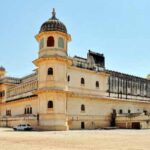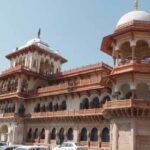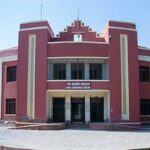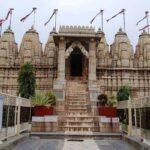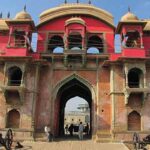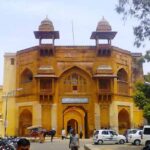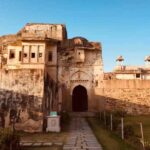Archaeological Museum of Chittorgarh, located in the historic city of Chittorgarh in Rajasthan, India, is a treasure trove of artifacts that reflect the rich cultural heritage of the region. The museum houses a diverse collection spanning various periods of history, including the ancient, medieval, and modern eras.
Visitors to the museum can explore a wide range of exhibits, including sculptures, inscriptions, coins, pottery, and architectural fragments. These artifacts offer insights into the artistic, religious, and social aspects of life in Chittorgarh and its surrounding areas over the centuries.
Highlights of the museum’s collection include intricately carved stone sculptures depicting Hindu deities, Jain Tirthankaras, and Buddhist figures, as well as ornately decorated pottery and artifacts related to the region’s medieval history, such as weapons and armor Museums in Rajasthan.
Through its exhibits, the Archaeological Museum of Chittorgarh provides visitors with a fascinating glimpse into the rich cultural tapestry of Rajasthan and the enduring legacy of its ancient civilizations.
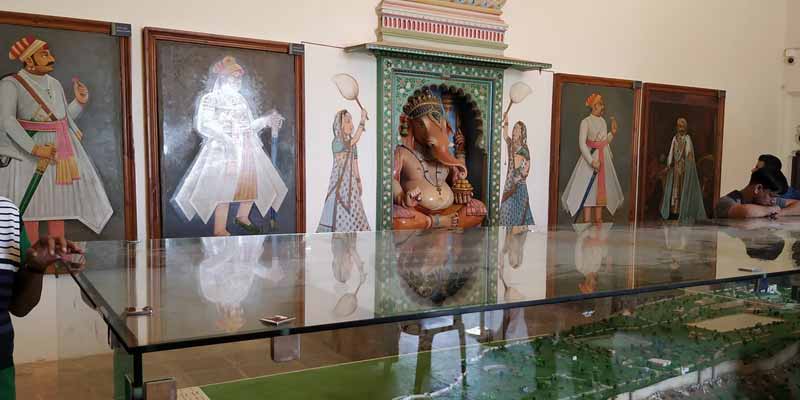
History of Archaeological Museum, Chittorgarh
The Archaeological Museum in Chittorgarh, Rajasthan, India, has a history dating back to its establishment in the late 19th century during the British colonial period. The museum was founded with the aim of preserving and showcasing the rich cultural heritage of Chittorgarh and its surrounding regions.
Initially, the museum was housed in a modest building, but over the years, it expanded its collection and facilities. The museum’s collection grew through archaeological excavations, donations, and acquisitions, gathering artifacts spanning various historical periods, including the ancient, medieval, and modern eras.
In 1968, the Archaeological Museum was relocated to its current premises within the Chittorgarh Fort complex, a UNESCO World Heritage Site known for its historical significance and architectural marvels. The new location provided a more suitable and prestigious setting for the museum, enhancing its visibility and accessibility to visitors Rajasthan Budget Tours.
Since its relocation, the museum has continued to evolve, adding new exhibits, improving display techniques, and enhancing its educational and outreach programs. Today, the Archaeological Museum of Chittorgarh stands as a prominent institution dedicated to preserving and interpreting the cultural heritage of the region, attracting tourists, scholars, and history enthusiasts from around the world.
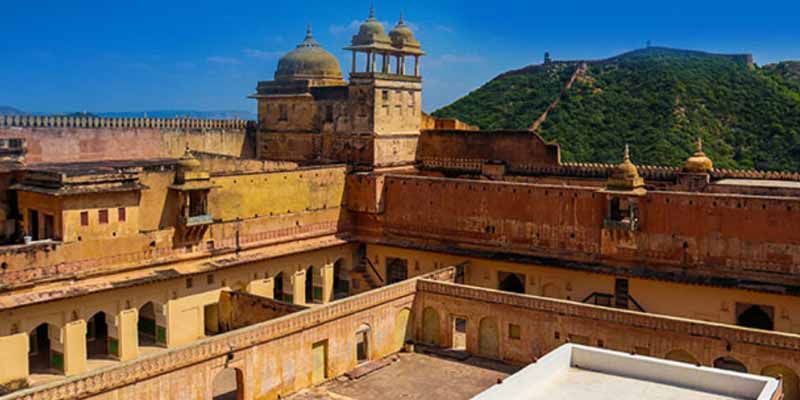
Places to Visit Near Archaeological Museum
The Archaeological Museum of Chittorgarh is located within the Chittorgarh Fort complex, which itself is a UNESCO World Heritage Site and a major attraction in Rajasthan, India. Here are some other places to visit near the Archaeological Museum of Chittorgarh:
Chittorgarh Fort: Explore the majestic Chittorgarh Fort, one of the largest forts in India, known for its impressive architecture, beautiful palaces, and historic temples. The fort offers panoramic views of the surrounding area.
Vijay Stambh (Victory Tower): This iconic tower, also known as the Tower of Victory, was built by Maharana Kumbha to commemorate his victory over the Sultan of Malwa in the 15th century. It stands as a symbol of Chittorgarh’s resilience and valor.
Kirti Stambh (Tower of Fame): Another impressive tower within the fort complex, the Kirti Stambh, is dedicated to Jainism and adorned with intricate carvings depicting Jain deities and legends.
Padmini Palace: Visit the Padmini Palace, a beautiful white building located within the fort complex, known for its reflection pool and panoramic views of the surrounding landscape. It is associated with the legendary Queen Padmini.
Kalika Mata Temple: This ancient temple dedicated to Goddess Kali is located near the fort complex. It is known for its architectural beauty and religious significance.
Meera Temple: Explore the Meera Temple dedicated to the 16th-century mystic poetess, Meerabai, known for her devotion to Lord Krishna. The temple features intricate carvings and a serene ambiance.
Rana Kumbha Palace: Visit the ruins of Rana Kumbha Palace, the erstwhile royal residence known for its architectural grandeur and historical significance.
These are just a few of the many attractions near the Archaeological Museum of Chittorgarh that offer visitors a glimpse into the rich history and culture of the region Rajasthan Monuments.
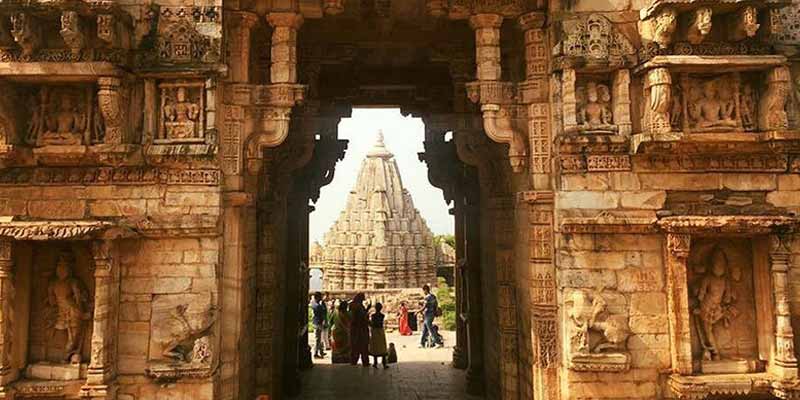
How To Reach Archaeological Museum
The Archaeological Museum of Chittorgarh is located within the Chittorgarh Fort complex, which is situated in the city of Chittorgarh in the Indian state of Rajasthan. Here are some common ways to reach the museum:
By Air: The nearest airport to Chittorgarh is Maharana Pratap Airport in Udaipur, which is approximately 100 kilometers away. From the airport, you can hire a taxi or use other public transportation to reach Chittorgarh.
By Train: Chittorgarh is well-connected by train, with regular trains running from major cities like Delhi, Mumbai, Jaipur, and Udaipur. The Chittorgarh railway station is located within the city, and from there, you can hire a taxi or take a local bus to reach the Chittorgarh Fort complex.
By Road: Chittorgarh is well-connected by road networks, and buses operated by the Rajasthan State Road Transport Corporation (RSRTC) as well as private operators ply to and from various cities in Rajasthan and neighboring states. National Highway 48 passes through Chittorgarh, making it accessible by road from major cities like Jaipur, Udaipur, and Ahmedabad. Once in Chittorgarh, you can hire a taxi or use local transportation to reach the Chittorgarh Fort complex.
Local Transportation: Once you reach Chittorgarh city, you can hire a taxi, auto-rickshaw, or cycle-rickshaw to reach the Chittorgarh Fort complex, where the Archaeological Museum is located. The fort complex is a prominent landmark in the city and can be easily reached from any part of Chittorgarh.
It’s advisable to check the current transportation options and schedules, as they may vary based on factors such as the time of year and any ongoing events or festivals. Additionally, consider the travel time and plan your visit accordingly to make the most of your trip to the Archaeological Museum of Chittorgarh.

